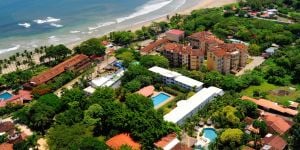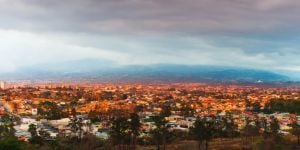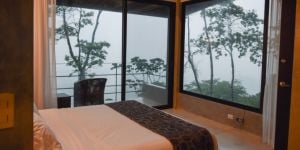How long does it take to get construction approved?
Last activity 13 December 2014 by samramon
7357 Views
56 replies
Subscribe to the topic
Post new topic
I plan to build a cabin next year in the San Ramon area and am wondering :
* How long does it take to get approval to build a home?
* Does this depend on which county or city you are in or near? (If so do you have any info on the near-San Ramon area/ County of Alajuela?)
* Do you have to get INVU or other approvals? How long does/ can this take?
Basically I just want to know how long it takes (ballpark estimate) to get a design approved, then get whatever bureaucratic stuff approved to build?
Since we are just building a cabin I would hope the building itself will not take as long as a home, but if you have any ideas on this as well, I'll be happy to hear them.
If you have any links to web sites that may answer these questions or help me, please PM me as I know the mods here are very nervous about giving out links for some reason. To PM me click on my Tucan icon on the left and on the page that comes up look for a MESSAGE button at the top right.
Supposedly it is now quicker to receive the required permit, and your architect is supposedly able to do this via the internet.
Best to check with your municipality, rather than rely on forum members, as each municipality will have different requirements
Short and non professional version:
By law, all applications for construction permits must be filed by an architect or civil engineer who is a member of the Costa Rican Association of Engineers and Architects These experts will review your plans to ensure the building meets seismic, electrical and other regulations standards
Cost of your permit will depend on this.
Proof of available water, etc.
Legal paperwork showing access to the property from the road.
Permission is required from MINAE if you want to remove trees on the property.
Multiple copies of all legal documents ... than add some more 'just in case'.
Thanks. I of course am not relying on you nor anyone here to give me legal or expert advice, just wanted a "ballpark" idea.
I appreciate your reply, that makes me feel better as what I am concerned about is having to rent for a L O N G, L O N G time while things get approved before the cabin gets built!
From our experience the "soil movement" permits are the most stringent (if you have to level or move earth). We were not in a hurry and as longs as there was no spring found it was a month or so. After that our architect had no problem getting the required permits. From talking with others the soil permit can be the worst.
Hola Sanramon,
I built my house myself just outside of San Ramon. It was an easy and fast process. You do need to hire an architect for the blueprints and the permit. The cost will be around $2,000. I can recommend an architect in San Ramon that is trustworthy if you don't already have someone. The architect does all of the work of obtaining the necessary permits and telling you what's needed as you go. He's also the one that will do the "inspections." I found that as far as construction goes, I knew more than him and had a few arguments about how I'd build along the way. I built based on San Francisco Code rather than Cost Rica. SF get as many if not more earthquakes and their code is more strict.
I acted as the general contractor on my house and it cost me about $52,000.00 in total of materials and labor to date. I did not do like most Gringos do and pay a contract price. A skilled laborer gets about ¢3,000 per hour and unskilled ¢1,500. If you pay by contract price it will cost you literally ten times that amount or more. My house is 90% done and will cost another $9,000 to complete. I hired workers and paid them by the hour. You are more than welcome to come by to see what I did. If I built again I'd do a few things different and can talk to you about these things.
I purchased 5,000 m2 from a TIco for $30,000.00. ($6 per meter) That should be the average price in this area - unless you buy from a Gringo or use a realtor. If you use either of these, multiply that by about 5. There are many, many Ticos that have nice land for sell. ALWAYS use a lawyer to purchase land. ...assuming you haven't already purchased.
If you'd like to see what I built and talk more I'd be happy to meet with you guys. You can contact me directly at puravidafortwo@yahoo.com.
Take care,
- Dave
...didn't really answer your questions:
soil movement permit? Was not required that I recall. And I had to move "a lot" of soil. Put in a road and took about 10 meters of soil off the top of the hill for the plantel. If there was a permit, the architect took care of it.
Time line: Design of the blueprints, permit process took at most one month. VERY easy process and the architect does all of the work.
INVU: Never heard of it.
Construction: DO NOT have any construction done unless you are here - PLEASE. Sooooo many Gringos have homes built while in their home country and if you do - you WILL get screwed. Construction times depends on the type of house - block, stilt, metal, etc. I would strongly recommend metal framing due to the climate and earthquakes - and solid concrete foundation. If you start construction during the dry season, a small cabin type building shouldn't take more than 2-3 months at most. I built a two story house. Lower floor was block construction and the upper is metal framing. If I did it again, I would go all metal framing. I also wish I would have put in a nine or ten foot ceiling on the first floor. I put in 8 foot and then 16' upstairs. Making changes as you go here is MUCH easier than in the States. You just need the architect to approve.
Another consideration when building is "are you going to leave it empty when out of the country or is this a permanent move" whether a cabin or a home? As most residents know, it is inadvisable to leave any building without a trusted tenant in place.
I too suggest a steel-framed or cement building, and definitely not a 'wood cabin'.
You did say cabin...if the law has not changed, and what I found about building via the net, if you are planning less than 750 ft, under cover including patio/porch area, you do not need permits. Much different in permissible size than in the states. I lived in an all cement blocks home and it developed sizable cracks after some pretty good quakes. Always a good idea to talk to a local architect.
Yes, according to an architect friend, the rules have changed.
Even to take a shipping container off of the chassis and place on a foundation now requires a permit. As an extranjero it does not pay to try and circumnavigate the requirements.
This site offers good although possibly outdated information regarding fees, new requirements, etc. so you should double check with your local municipality to be sure.
Thanks it is good to know! Will be building also, and have been researching. Guess some sites (official ones) don't get updated either.
ExpatDave wrote:Hola Sanramon,
I built my house myself just outside of San Ramon. It was an easy and fast process. You do need to hire an architect for the blueprints and the permit. The cost will be around $2,000. I can recommend an architect in San Ramon that is trustworthy if you don't already have someone. The architect does all of the work of obtaining the necessary permits and telling you what's needed as you go. He's also the one that will do the "inspections." I found that as far as construction goes, I knew more than him and had a few arguments about how I'd build along the way. I built based on San Francisco Code rather than Cost Rica. SF get as many if not more earthquakes and their code is more strict.
I acted as the general contractor on my house and it cost me about $52,000.00 in total of materials and labor to date. I did not do like most Gringos do and pay a contract price. A skilled laborer gets about ¢3,000 per hour and unskilled ¢1,500. If you pay by contract price it will cost you literally ten times that amount or more. My house is 90% done and will cost another $9,000 to complete. I hired workers and paid them by the hour. You are more than welcome to come by to see what I did. If I built again I'd do a few things different and can talk to you about these things.
I purchased 5,000 m2 from a TIco for $30,000.00. ($6 per meter) That should be the average price in this area - unless you buy from a Gringo or use a realtor. If you use either of these, multiply that by about 5. There are many, many Ticos that have nice land for sell. ALWAYS use a lawyer to purchase land. ...assuming you haven't already purchased.
If you'd like to see what I built and talk more I'd be happy to meet with you guys. You can contact me directly at puravidafortwo@yahoo.com.
Take care,
- Dave
Dave, thanks a lot for this info and I would love to see what you've done and learn from your experience. I will definitely be contacting you on my next trip down there. (I will of course write you first and let you know when I will be there and see if you're available.) Appreciate the offer.
We already have our lot, which we bought quite a while ago. We'll be moving down permanently some time in early 2015 (Jan - Mar) at least, that's the plan. Now that I think about the seasonal aspect of it maybe I'll come down soon to try to get the wheels turning, to try to build in the dry season. It might be too late, but unfortunately there are considerations that prevent me from coming down now to get this going.
kohlerias wrote:Another consideration when building is "are you going to leave it empty when out of the country or is this a permanent move" whether a cabin or a home? As most residents know, it is inadvisable to leave any building without a trusted tenant in place.
I too suggest a steel-framed or cement building, and definitely not a 'wood cabin'.
Thanks for this. We plan to be there permanently but we also have a trusted gringo neighbor and a trusted caretaker. Of course I think even then your warning has merit but like I say we'll be there.
I know people who built wood on the rainier/windier side of San Ramon and they've had no problems. Why do you say wood is not good?
Also we have electricity but have to bring the wire about 150 meters from there. Any idea of cost on that?
This thread is really helping me, I appreciate all the info. Of course I realize that any info I get here has to be verified by official sources.
About wood structures there...when you get there, look at some wood structures and see what you think. There is a log cabin which was built a little over 10 years ago, in Los Angeles Sur, 5 miles north of San Ramon. It is windy there, and it has not weathered well. Had it been refinished, every couple of years, perhaps it would have held up better. It was a gentleman's dream, and I don't think he dreamed a very long dream. With the humidity and quantity of rain, wood does not hold up well. That said, remember that when you decide what to take there too. My first time living in CR, I brought everything, mistake! The pine furniture absorbed moisture and molded the first rainy season. We use faux wood here in the north for so much, they don't do well either. Hard wood will last longer and hold up for years, inside.
Insect infestation and damage will happen very quickly, unbeknownst to you ... and add to that wet and windy conditions, is asking for trouble, although a very large overhang may prevent some damage.
Even adding a wood skirting board around your floors will invite a spot for pests to hide.
A very hard wood may work but you will pay for it and it will need to be maintained at extremely regular intervals.
maezing wrote:About wood structures there...when you get there, look at some wood structures and see what you think. There is a log cabin which was built a little over 10 years ago, in Los Angeles Sur, 5 miles north of San Ramon. It is windy there, and it has not weathered well. Had it been refinished, every couple of years, perhaps it would have held up better. It was a gentleman's dream, and I don't think he dreamed a very long dream. With the humidity and quantity of rain, wood does not hold up well. That said, remember that when you decide what to take there too. My first time living in CR, I brought everything, mistake! The pine furniture absorbed moisture and molded the first rainy season. We use faux wood here in the north for so much, they don't do well either. Hard wood will last longer and hold up for years, inside.
hi, I happen to have met that gentleman and been in his cabin. No, it was not taken good care of.
I believe some of the houses there are also made of wood, no? And seem to be holding up okay...
That said, I am definitely not set on building with wood, in fact I am looking at SIP panels and other alternative building materials and designs.
I have been around the forums enough to know that shipping stuff is generally not recommended, though I know some do and seem to be happy enough. For us it just isn't necessary and I prefer to avoid the expense and trouble. For me personally I find the idea of "starting over" with new stuff, shedding off the old stuff, refreshing. My wife probably differs but has agreed to go along with me on this.
kohlerias wrote:Insect infestation and damage will happen very quickly, unbeknownst to you ... and add to that wet and windy conditions, is asking for trouble, although a very large overhang may prevent some damage.
Even adding a wood skirting board around your floors will invite a spot for pests to hide.
A very hard wood may work but you will pay for it and it will need to be maintained at extremely regular intervals.
I had always thought wood was not the best idea since most Ticos build with cement. However I had begun to think the other way based on a couple houses I know of that were built with wood and seem to be doing find after many years. I'll have to research this more but I do find wood to be "warmer" feeling and nicer looking. Iin the end I'll probably go with what is utilitarian and cheapest.
Tom's, now deceased, was the only one built for gringos made with wood. Others are cement construction in Rancho Lobo, some with wood finishings, some ceilings.
Expat Dave, I would like to hear more about metal construction... If you wouldn't mind, we could take the conversation to email. I can be emailed, maezing at yahoo dot com.
maezing wrote:Tom's, now deceased, was the only one built for gringos made with wood. Others are cement construction in Rancho Lobo, some with wood finishings, some ceilings.
Expat Dave, I would like to hear more about metal construction... If you wouldn't mind, we could take the conversation to email. I can be emailed, maezing at yahoo dot com.
If you have that conversation here on the forum, it would be helpful to me and others as well.
Thanks for the info on Rancho Lobo construction. My memory did not serve me well in this case as I thought others there were made from wood. Maybe I was thinking of the ceilings, maybe some interior finishings.
I have another thread here on alternative building designs and materials. If you have any info on those - good or bad - I'd love to hear it. I'm interested in SIP panels etc. but have to do more research to see if these and other materials are suitable for the San Ramon area.
Yes, I think post the conversation here is a good idea. I have also done research on more green building, SIP, cob, rammed, earthship, straw, etc. A very good book about many types is The Natural House.
http://www.amazon.com/dp/B001P5G2XI/ref … BQ3LVEGS9K
My brother and I went to see several different green projects in Fairfield, Iowa in early October. After an extensive tour of 15 or 16 projects we both came away with the same conclusion, we are going to stay between the rails. With the climate and earthquake tendencies for CR, we are not going to risk a failure. That being said, we will do other things to be as green as we can both in building and land/water/permaculture/animals as possible. Ensuring building is done on bedrock to avoid landslides under or near the house is paramount. I do want to know how metal is used, framing? Just outside? What is the inside finished with? I hear from friends that wealthy Ticos are building "prefab" houses, that "look like northern homes". What that means, I do not know. Will have to ask in an email...my first reaction was to scream"NO!!" Can't imagine, but maybe those are SIPs of a sort. Will post back what I find out.
"Wealthy people are building pre-fab homes"...I don't think so!!! They are building with steel, cement, block and glass.
Steel is often used for roof trusses, and framing with sheetproc/gyprock applied on top for walls, and ceilings, in many cases.
One should sit down and discuss with an architect, what you would like to achieve and he, after visiting your building site should know the conditions of your land and make his recommendations.
""Wealthy people are building pre-fab homes"...I don't think so!!! They are building with steel, cement, block and glass." You maybe right in cases, but I do know a family who did and they know others.
I wad not saying they were made to the same specs as ones made in the states, they are a pre-fab construction and I want to know what it is constructed with. Whether it will stand the test of time. Maybe they are foaming between metal...
We live in a community out in the country and the developer just built (almost finished) his first pre-fab home. It turned out very well and looks great. It would not be my cup of tea after seeing our traditional house being built but it has potential
The pre-fab...What is the construction made of? Where? Is it imported?
Let me check with Brian (the developer) in the next couple of days and I will post. We live in La Palma and he built the first one as a test rental unit. The walls are concrete panels with rebar. They are about two inches thick and they are interlocking. Because of this it means that the house will be square or rectangular. I will get a picture of it later today and post a link here for you.
maezing wrote:Yes, I think post the conversation here is a good idea. I have also done research on more green building, SIP, cob, rammed, earthship, straw, etc. A very good book about many types is The Natural House.
http://www.amazon.com/dp/B001P5G2XI/ref … BQ3LVEGS9K
My brother and I went to see several different green projects in Fairfield, Iowa in early October. After an extensive tour of 15 or 16 projects we both came away with the same conclusion, we are going to stay between the rails. With the climate and earthquake tendencies for CR, we are not going to risk a failure. That being said, we will do other things to be as green as we can both in building and land/water/permaculture/animals as possible. Ensuring building is done on bedrock to avoid landslides under or near the house is paramount. I do want to know how metal is used, framing? Just outside? What is the inside finished with? I hear from friends that wealthy Ticos are building "prefab" houses, that "look like northern homes". What that means, I do not know. Will have to ask in an email...my first reaction was to scream"NO!!" Can't imagine, but maybe those are SIPs of a sort. Will post back what I find out.
When you say "stay between the rails" I'm not sure what you mean. Would you clarify please?
Do you mean more traditional design or ?
I am looking at something like this:
http://www.greywater.com.au/yurts/yurtmenu.htm
It's just an idea, I haven't researched it for Costa Rica conditions yet. Am *thinking* this could work with SIP panels and be easy to add on to.
Thanks for the book recommendation!
Yes, 'stay between the rails', a more traditional build.
Also, I am laughing as I read that you mention a yurt. Reason...my brother and I stayed in one when we visited in Fairfield, Iowa the first of Oct. It was wind proof, pretty much, but the night it got down to 32 degrees, was more cold than I ever want to feel again. Many blankets, thankfully, and my 2 little pups kept me warm, but getting up to go to the outhouse was truly and experience. The wind blows pretty hard across the plains there in eastern Iowa.
Now, CR does not get that cold, but when the winds blow, you sure would want a wood fire box to keep you warm. I do see some at a resort site at Nosara, which is farther south, but I can't say I'd want one in San Ramon area. The noise from rain and wind would get overwhelming I'm sure. If you had one to use while building, you could sure see what you think after a full year of the seasons. Might be nice to have to rent out during dry season to northerners who are willing to rough it. I saw some pretty nice ones for around $3000, don't remember the site.
Sorry, I didn’t get notification that this topic had continued on.
I built a two story house with a concrete slab, meter and a half footers and block first floor for the walls. I “did not” use columns in my constructions as Tico’s typically do. This was a big point of contention between me and my architect. It was called for in the plans but there was no way I’d agree to it. They normally put in concrete columns in the corners rather that tying the blocks together. I understand but disagree with this technique. I have seen a number of times where they put the columns in but did not tie them in with rebar into the block as they should.
I used more than what was required in the way of rebar to tie it all together. Basically, the lower structure is built like a bank vault. At the top of the block wall I inserted 12” lag bolts into the block as it was filled - running up vertically to tie in the upper structure. The bolts were placed every 24”.
These bolts then tied into the girder beams. I used 4” X 4” galvanized metal. The 2nd story floor joist were also 4” x 4” set 24” on center. These were of course tied into all of the interior lower floor walls. I then used the same 4” x 4” metal to frame the upper structure. The roof peak on the upper floor is 13’ and it slopes down to an 8’ wall. (I thought it was a 16’ peak, but I just measured to confirm.) It’s not a huge house - inside measurement 24’ x 26’, but with the high ceiling it feels much larger. The upper floor has no interior walls except for a bathroom. The upper floor is the living space - kitchen, great room with four connecting french doors that fold open onto a 24’ x 14’ deck. The roof line also extends out over the deck so that also makes it seem larger. (…three bedroom, one bath downstairs and a laundry area.)
For the upstairs walls I used a metal framed structure. Again, 4” x 4” steel running vertical on 5’ centers. In-between each of these I framed it out with treated 2” x 4” wood. By treated I mean I coated them on all sides with what would be comparable to a varnish/stain mix in the States. I’ve never seen green-board here if they have it.
I ordered Romex wire from the States and ran in all in electrical tubo. They normally use single wire here. My experience with Tico’s and electrical wiring is, hmmm, how do I put this, it could not be worse. I would STRONGLY recommend NOT using Tico’s for any form of electrical wiring - or plumbing as far as that goes.
The upstairs interior walls are cement board and then textured. I insulated the walls and added a vapor barrier. Not normally done here at all. I did it for sound proofing and to help keep the bugs out.
For the exterior wall, I used wood running vertically, using 1” x 12” wood planks with 1” x 2” boards over the intersection of board. These boards all have four coats on all sides of varnish/stain sealer. I’m drawing a blank on the type of wood that I used. I have had no problems with wood rot or bugs; however, I also have the house fogged every six months. Not something I like doing but it’s a necessary evil here. There is a year round creek that runs about 15 meters from the house so on top of the normal humidity on the property I have a bit extra. The new kitchen appliances started rusting after just 3.5 years - so it’s very moist here with no problems with the wood.
I did insulate the ceiling - mainly to cut down on the noise of the rain and of course to help with moisture issues. I used the higher grade red metal roofing for the roof. I wasn’t sure I”d be happy with this type of roof but have become accustomed to it.
Upper floor interior ceiling I used green board. I’m not a fan of the Tico style wood ceilings and am very happy with the sheetrock. The main reason that I dislike the wood ceilings is in time you will have to sand it and re-seal it. That will be a dusty mess and I just didn’t want to deal with it. They look great when new, but too much maintenance over time.
With the upstairs floor, the plans called for 6” of concrete. Not something I was comfortable with over my head in an earthquake area. So I went with two sheets of 1” cement board - so two inches thick with hundreds of screws holding it all together. I put 20” tile over that. There is some give but have not had any cracks in the grout or tile in 3 years since it went in. With the movement of the ground here I’d rather have a little give. Not saying the house moves, just not as “unmoving” as 6” of concrete would be.
I also put in a lot of windows. The majority of the front and back of the house is windows. I just like a lot of light.
Now that this has turned into a book, please feel free to pick by brain for whatever that’s worth.
- Dave
TerrynViv wrote:We live in a community out in the country and the developer just built (almost finished) his first pre-fab home. It turned out very well and looks great. It would not be my cup of tea after seeing our traditional house being built but it has potential
A Tico down the road from me had a pre-fab built. Well, thrown together in about 3+ weeks. I would not recommend them at all. Mainly due to the very, very poor way the electrical and plumbing is installed. They are inexpensive - $7,000 for what they built, but, you most definitely get what you pay for. The wiring is strongly forced in after the fact and the plumbing looked like 3" for the drains. So waste paper goes in a basket next to the toilet, not down the drain.
I'm really not the negative person that this sounds like. I am just conveying my experiences and opinions. And once again, we all know what they say about "opinions." 
Great info! Thanks! That was why I was wanting to know where they were being made. Specs are everything!
Actually pre-fab is not the word I would use. Modular is better. I did not get my picture today but this is not a "Tico" house. There are three people considering this type of house as a less expensive way to go. There are conduits in the "walls" ready for the electrical and it has the standard plumbing package. I am not pushing this as we just finished our traditional house. Don't criticize what you have not seen. I am only replying to a poster's question. $7,000 would not touch the grey stage.
It is good to know that there are different qualities also. Research and scouting it out are defiantly a must. Please continue with photos/info.
maezing wrote:Yes, 'stay between the rails', a more traditional build.
Also, I am laughing as I read that you mention a yurt. Reason...my brother and I stayed in one when we visited in Fairfield, Iowa the first of Oct. It was wind proof, pretty much, but the night it got down to 32 degrees, was more cold than I ever want to feel again. Many blankets, thankfully, and my 2 little pups kept me warm, but getting up to go to the outhouse was truly and experience. The wind blows pretty hard across the plains there in eastern Iowa.
Now, CR does not get that cold, but when the winds blow, you sure would want a wood fire box to keep you warm. I do see some at a resort site at Nosara, which is farther south, but I can't say I'd want one in San Ramon area. The noise from rain and wind would get overwhelming I'm sure. If you had one to use while building, you could sure see what you think after a full year of the seasons. Might be nice to have to rent out during dry season to northerners who are willing to rough it. I saw some pretty nice ones for around $3000, don't remember the site.
I could be wrong but I think an octagonal building could work if built with the right materials. The things you mention like it being cold and being noisy from the rain and wind I think can be minimized based on using the right materials. Again I'm no expert, just beginning to research it so your comments are good because it makes me think about what problems may have to be solved.
As mentioned, we are building a cabin to live in until we sell 2 of our lots and then have the $ to build a bigger house or add on to the cabin, one or the other. We may keep the cabin a separate unit for guests or for an office, etc - not sure how that will pan out yet.
We are probably going to have a fireplace, and also a jacuzzi.
Our idea for our cabin is "small cabin - HUGE porch", as - having lived in Costa Rica before, on various occasions - I find being outside the best place to be, especially during hot days. And I love watching the thunderstorms from a dry outside area - preferably laying in a hammock with a book and a cup of coffee on a table next to me.
ExpatDave wrote:TerrynViv wrote:We live in a community out in the country and the developer just built (almost finished) his first pre-fab home. It turned out very well and looks great. It would not be my cup of tea after seeing our traditional house being built but it has potential
A Tico down the road from me had a pre-fab built. Well, thrown together in about 3+ weeks. I would not recommend them at all. Mainly due to the very, very poor way the electrical and plumbing is installed. They are inexpensive - $7,000 for what they built, but, you most definitely get what you pay for. The wiring is strongly forced in after the fact and the plumbing looked like 3" for the drains. So waste paper goes in a basket next to the toilet, not down the drain.
I'm really not the negative person that this sounds like. I am just conveying my experiences and opinions. And once again, we all know what they say about "opinions."
Dave, I know you are not a "negative person". I call it being "realistic" and calling it as you see it.
I would not imagine that anything worth living in could cost $7k. However I am hoping we can do it for $20-25k for a small one bedroom "large cabin". Plumbing is where we will not want to scrimp, and we want electricity done right as well! As mentioned, our idea is to build a cabin for eating, sleeping and pooping but with a large porch/patio for living.
Do you know if it adds a lot of expense to build a fireplace?
Thanks for your participation in this thread, you're a valuable resource!
When your plans are submitted by your architect to his 'peers', the same 'cost per m²' will be put on your patio or porch as for your main house or cabin. This is where they determine the cost of your permit.
Thanks, for posting photos. Looks like the typical Tico house, after outside is finished... I would be interested to know what the walls are made of. Where is this located? Is the contractor local also?
The walls are prefabbed concrete panels with rebar inside. I think they are 4 feet wide. This house is located in Altos de Antigua. The builder lives in our community and this is his first modular home (he has built traditional Spanish / Mediterranean houses to date). This is going to be a rental unit and now that two other lot owners have seen it they are considering going modular.
Cheers .... Terry
The house looks very nice, however, my comment is that, there is no way I would have built anything at the bottom of the slope where the house is located, where there is already the sign a problem, as shown on the right hand side
That, in my opinion, is asking for trouble, having seen many landslides here.
Then you would have to visit to allay your fears. Our house backs into the mountain (as does many others in our little community). The developer is well aware of drainage and you would not believe the in ground and underground systems installed when a house is built. That particular slope behind the house in the picture is solid and there are channels cut to move the water horizontally into catch basins that go underground and then drain to one of the three creeks / rivers on the property. Our house has eight horizontal runoffs both above and below us. There are four catch basins in the yard with a total 15 drain lines feeding them. All catch basins drain to concrete troughs which are then channeled to the river. On our driveway alone there are five drainage paths to the concrete troughs. One of the reasons we decided to build and live here is the fact that Brian has greatly over-engineered the water management system. There are seventeen houses built on the same slope or worse than what the picture shows. Not one has had a water problem. Not saying it could not happen but you will not find a better water management system easily.
Cheers .... Terry
Articles to help you in your expat project in Costa Rica
 Buying a property in Costa Rica
Buying a property in Costa RicaCosta Rica's political and economic stability, as well as its natural beauty and pleasant climate, make it an ...
 Accommodation in Costa Rica
Accommodation in Costa RicaYou may find yourself rushing to enjoy the Pura Vida lifestyle — a laid-back philosophy of relaxing, having ...
 Buying Property In Costa Rica
Buying Property In Costa RicaThe first thing about buying Costa Rica real estate is that you need to be absolutely 100% SURE you want to ...
 Accommodation in San Jose
Accommodation in San JoseAccommodation is plentiful in Costa Rica's capital, and you'll find something to fit any budget or ...
 Accommodation in Heredia
Accommodation in HerediaHeredia offers a relaxed lifestyle while living in a city, and its convenient Central Valley location, near the ...
 Accommodation in Santa Ana
Accommodation in Santa AnaWondering where to settle in Santa Ana and how to find accommodation? Find out in this article.
 Work in Costa Rica
Work in Costa RicaA low unemployment rate and a strong economy set Costa Rica apart from its neighbours. If you have fallen in love ...
 The health care system in Costa Rica
The health care system in Costa RicaCosta Rica has received international praise for its modern healthcare system, and both citizens and legal ...
Find more topics on the Costa Rica forum



